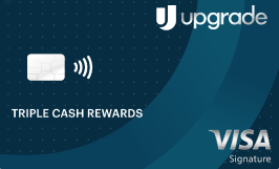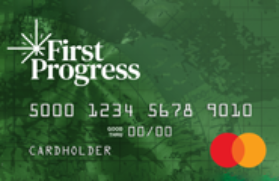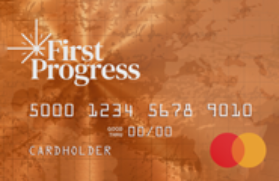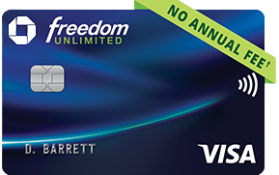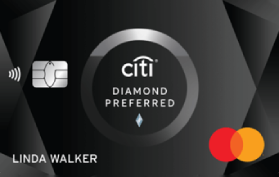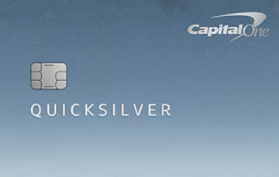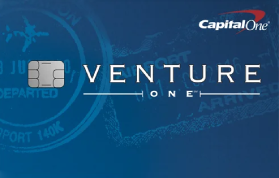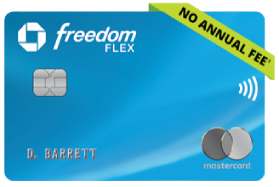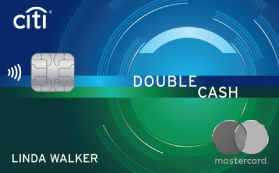Short Review of Best Low Interest Credit Cards
| Name | Best for | Purchase APR | Balance Transfer APR | Rewards Rate | Apply |
|---|
Upgrade Cash Rewards Visa® | Good credit score | 14.99% - 29.99% Regular | 14.99% - 29.99% | 1.5% Cash Back on payments. | Apply now On Upgrade‘s website |
Upgrade Triple Cash Rewards Visa® | Low income | 14.99% - 29.99% Regular | 14.99% - 29.99% | 3% Cash Back on Home, Auto and Health categories.1% Cash Back on everything else. | Apply now On Upgrade‘s website |
First Progress Platinum Prestige Mastercard® Secured Credit Card | | 14.24% Variable | | 1% Cash Back rewards on payments. | Apply now On First Progress’s site |
First Progress Platinum Select Mastercard® Secured Credit Card | | 18.24% Variable | | 1% Cash Back on payments made to your First Progress Secured credit card account. | Apply now On First Progress’s site |
Blue Cash Everyday® Card from American Express | Cash Back, Gas, 0 APR, No Annual Fee, Families, Shopping, Groceries | 18.74% - 29.74% Variable | 18.74% - 29.74% | 3% Cash Back on groceries at U.S. supermarkets, on up to $6,000 per year in purchases (then 1%).3% Cash Back on U.S. online retail purchases on up to $6,000 per year in purchases (then 1%).2% Cash Back on gas at U.S. gas stations on up to $6,000 per year in purchases (then 1%).1% Cash Back on other purchases. Cash back is received in the form of Reward Dollars that can be redeemed as a statement credit. | Learn more |
| Cash Back, 0 APR, No Annual Fee, Daily use | 18.99% - 28.49% Variable | 18.99% - 28.49% | 5% Cash Back on travel purchased through Chase Ultimate Rewards.3% Cash back on dining at restaurants, including takeout and eligible delivery services.3% Cash Back on drugstore purchases.1.5% Cash Back on all other purchases. | Learn more |
| 0 APR, No Annual Fee | 17.24% - 27.99% Variable | 17.24% - 27.99% | This card doesn't offer cash back, miles or points. | Learn more |
| Cash Back, No Annual Fee | 17.74% - 27.74% Variable | 17.74% - 27.74% | 5x Points per $1 spent on hotel, car rentals and attractions booked on CitiTravel.com through December 31, 2025.2x Points at supermarkets and gas stations (on up to $6,000 in purchases per year, then 1x points).1x Points on all other purchases. | Learn more |
Capital One Quicksilver Cash Rewards Credit Card | Cash Back, No Annual Fee, Daily use | 19.99% - 29.99% Variable | 19.99% - 29.99% | 5% Cash Back on hotels and rental cars booked through Capital One Travel.1.5% Cash Back on every purchase. | Learn more |
Capital One VentureOne Rewards Credit Card | Rewards, No Annual Fee, Daily use | 19.99% - 29.99% Variable | 19.99% - 29.99% | 5x Miles per dollar on hotels and rental cars booked through Capital One Travel.1.25x Miles per dollar on all purchases. | Learn more |
| Cash Back, 0 APR, No Annual Fee, Daily use | 18.99% - 28.49% Variable | 18.99% - 28.49% | 5% Cash Back on up to $1,500 on combined purchases in bonus categories each quarter you activate.5% Cash Back on travel purchased through Chase Ultimate Rewards.3% Cash Back on dining at restaurants, including takeout and eligible delivery services.3% Cash Back on drugstore purchases.1% Cash Back on all other purchases. | Learn more |
| Cash Back, No Annual Fee, Daily use | 18.24% - 28.24% Variable | 18.24% - 28.24% | 2% Cash Back on every purchase with unlimited 1% Cash Back when you buy, plus an additional 1% as you pay for purchases. | Learn more |
Blue Cash Everyday® Card from American Express
The Blue Cash Everyday® from American Express® comes with a 15-month 0% APR offer on purchases, and the ongoing, variable APR is 18.74% - 29.74%. It’s for people who spend a lot on groceries and gas as it has high rewards rates for these categories.
Read more about Blue Cash Everyday® Card from American Express
Chase Freedom Unlimited®
This card offers new cardholders 0% APR on purchases and transfers for 15 months, and the variable APR is 18.99% - 28.49%. Additionally, it earns you 5% cash back on travel (if purchased through Chase Ultimate Rewards), 3% on dining and drugstores and an unlimited 1.5% cash back on all purchases. There's a $200 sign-up bonus too (after you spend $500 on purchases in the first 3 months).
Read more about Chase Freedom Unlimited®
Citi Diamond Preferred®
If you’re looking for a low-interest card that is also good for a balance transfer, the Citi Diamond Preferred® is worth considering. It offers a lengthy interest-free period (12 months for purchases and 21 months for balance transfer). The variable APR after is 17.24% - 27.99%. If you want to monitor your credit score, this card gets you free access to it.
Read more about Citi Diamond Preferred®
Citi Rewards+®
If you want to earn rewards and transfer your balance to a low-interest card, you should opt for Citi Rewards+®. The 0% APR offer on balance transfers and purchases gives new cardholders a 15-month break from interest. After, they'll pay an ongoing variable APR of 17.74% - 27.74%. Regarding the rewards program, it'll earn you 2x points at supermarkets, and gas stations and 1x on everything else. It also includes a few other features that give your rewards a boost.
Read more about Citi Rewards+®
Capital One Quicksilver Cash Rewards Credit Card
The Capital One Quicksilver can help you finance your next big purchase while earning you an unlimited 1.5% cash back on all purchases. The promo 0% interest offer lasts for 15 months after account opening and after the variable APR is 19.99% - 29.99%.
Read more about Capital One Quicksilver Cash Rewards Credit Card
Capital One VentureOne Rewards Credit Card
If you love traveling but hate high interest (who doesn't?!), you're going to like the Capital One VentureOne Rewards, one of the top travel rewards cards. New cardholders can get the interest-free period for purchases and transfers (12 months), while the ongoing variable APR is 19.99% - 29.99%. As for the rewards, this card will earn you 20,000 bonus miles (once you spend $500 on purchases within the first 3 months from account opening), 5 miles on hotels and car rentals, 1.25 miles per dollar on all purchases, and there are several redemption options.
Read more about Capital One VentureOne Rewards Credit Card
Chase Freedom Flex℠
Besides low interest, the Chase Freedom Flex℠ also offers great rewards. Its 15-month 0% APR on purchases and transfers is great if you're eyeing something pricey, like a new laptop. After that, you'll be charged a variable APR of 18.99% - 28.49%. There's a generous 5% cash back on travel purchased through Chase Ultimate Rewards, 5% cash back on up to $1,500 on combined purchases in bonus categories, 3% cash back at restaurants (including takeout and delivery) and drugstores, and 1% cash back on everything else.
Read more about Chase Freedom Flex℠
Citi Double Cash
As its name says, Citi Double Cash earns you double cash back, 1% when you buy and 1% when you pay for the purchase. It has a great, 18-month 0% APR for balance transfers, while the ongoing APR is 18.24% - 28.24%. Based on their creditworthiness, some cardholders might be eligible for the Citi Flex Plan, with which you can pay off your purchases with fixed monthly payments, and you can also borrow from your credit line.
Read more about Citi Double Cash
What do interest rate and APR mean, and how do they work?
Unless you pay your balance in full every month, credit card companies will charge you interest. This interest is usually expressed as the annual percentage rate (APR). This APR is variable, which means it will occasionally change based on the prime rate.

For example, the current (May 2021) prime rate in the U.S. is 3.25%, so if your credit card charges the prime rate plus 10%, the APR will be 13.25%.
You will only be charged interest if you don't pay your balance on time, and the APR will be applied to the remaining, unpaid balance on your credit card. The credit card company will add that charge to your balance. So if you make a habit of carrying your balance month-to-month you'll end up paying interest on your interest. Things could easily get out of control, which is why you need to be careful even with low-interest credit cards.
How does APR differ from the monthly interest rate?
You can notice that the first letter in APR stands for annual (percentage rate). However, if your APR is 18%, that's not the monthly interest rate you'll get charged on your balance. Instead, it's simply that rate divided by 12. So, you'll pay 18%/12 = 1.5% interest rate on your outstanding balance every month. You calculate your daily periodic rate in the same way, you just divide with 365, instead of 12. It will be 18%/365 = 0.049%.
Let’s go through a short example to better understand how APR works. John has a $2,000 balance on his credit card. He pays off his balance in equal installments, $60 each month. The APR he pays on his balance is 20.29% (current average APR in the U.S.). That is how the numbers of his credit card debt will look for the first month:
| Principal | $2,000 |
| Payment (2% of balance) | $60 |
| Monthly interest | ($2,000 x 20.29%)/12 months = $33.82 |
| Principal repayment | $60 - $33.82 = $26.18 |
| Remaining balance | $2,000 - $26.18 = $1,973.82 |
With this tempo, it will take John nearly four years to pay off his balance, assuming he doesn't add up to it in the meantime. He will pay $837 in interest during that period, which is almost half of his principal amount.
How does your credit score affect your interest rate?
We mentioned above that the prime rate determines the APR, which is correct, but also your credit score will further define the interest rate you'll pay. Each credit company discloses a variable APR range, and which APR you get within that range will depend on your creditworthiness. Your creditworthiness is measured by your credit score.
Credit scores show companies how 'risky' you are, how likely it is that you're going to make all your payments on time if given new credit. A high credit score means that you've managed debt well in the past, and you will get an APR that’s closer to the lower range limit. On the other hand, a low credit score will signal banks that you might default on a loan. They will set a higher APR to compensate for the risk and get most of the loan back early on.
Usually, your FICO score will be taken into account when calculating your APR. A score above 670 is considered a good score, while a score above 740 is considered excellent. Credit card companies don't reveal the interest rate assigned for each credit score. You'll know that only after you apply for the card. Generally, you can expect to get a lower APR for a good credit score and a high one with a bad credit score.
How to compare low-interest credit cards?
If you're looking into low-interest credit cards, it means you want to save money, and you think you might carry a balance on your credit card. Or you just want to protect yourself from an unexpected cost, like your car breaking down or a medical bill. Whatever the reason, it’s important to find the right card that will be the best deal for you. We’ll give you a few tips on how to compare them:
- Do you need a 0% APR offer along with the low interest? – Is it important to you that the card has a 0% APR period? You might want to transfer a high-interest balance and take advantage of the interest-free period for some time. Or you are planning a large purchase, so it matters that the card has a 0% APR on purchases. The US bank Visa® Platinum and the Citi Diamond Preferred® have the lengthiest intro offers, both for balance transfers and purchases, 20 and 18 months each respectively.
- Interest rates – Compare the ongoing APRs of each card, and also consider your credit score which will determine your interest rate. Intro APR offers are still only short-term. What matters in the long term, if you keep a balance, is the regular APR.
- Fees and charges – Since your goal is saving money, you probably want to avoid any fees. First, consider the annual fee, which might outweigh the money you save on interest. All credit cards on our list are without annual fees. Then, there is the balance transfer fee, and if you're planning to transfer a balance to your new card, you should include it in your calculation. The Navy Federal nRewards Secured doesn’t have a balance transfer fee. Lastly, there are late and penalty fees which you can avoid by making at least the minimum payment on time.
- Rewards and benefits – Several of the cards on our list are rewards credit cards that have great deals on interest for purchases and balance transfers. So, it's possible to get a card that not only saves you money but it also earns you some.
Making the most of your low-interest credit card
To make the most out of your low-interest credit card, you should first take advantage of the 0% intro APR offer if it has one. Try to pay as much as you can during this period. After the period ends and if you are still carrying a balance, make an effort to pay well above your minimum payment. Of course, we advise you to pay at least the amount of the minimum payment each month to avoid late and penalty fees. In any case, carrying a balance on your credit card is never cheap, and you should manage it responsibly.
Common APR Myths
Let’s go through some popular myths involving APR and credit cards. We'll clarify them because believing false statements about APRs can end up costing you money.
Myth #1 – My credit score is not that important
We are sorry to be the ones telling you this – but your credit score matters. It's the greatest factor when the credit card company is deciding whether or not you'll get approved for the card, and later it also impacts the APR you will get. If you don't believe us, look at this table of effective interest rates that consumers with different credit scores have gotten.
| Credit score category | Effective interest rate
|
|---|
| Deep Subprime (579 or lower) | 21.0% |
| Subprime (580 - 619) | 20.5% |
| Near Prime (620 - 659) | 19.0% |
| Prime (660 - 719) | 16.5% |
| Super Prime (720 or greater) | 13.6% |
| Overall | 15.7% |
Source: CFPB's Consumer Credit Card Market Report
Myth #2 – So what if I miss a payment now and then, it’s not a big deal
Except that - it IS a big deal. First, it will affect your credit score, and we think you know how much damage a lower credit score can make. Then, let’s not forget about the penalty APR if your card has one, which is very probable that it will, as most credit cards do. The penalty APRs are much higher than the regular APRs and vary between 25% - 30%. So, if you forget or simply leave a balance hanging, you can find yourself buried in debts. Assume you have a $5,000 balance on a credit card that you're unable to pay off. Let's say that the penalty APR is 25%. If you trigger it, one year, you'll owe $6,250. Do you still believe missing payments is not a big deal? And we haven't even mentioned the late fees you could get charged with.
FAQ
What is the best credit card with the lowest interest rate?
Unfortunately, we cannot answer this as the interest rate depends on your choice of credit card, your credit score, and your overall financial situation. Follow our tips on how to compare low-interest rate credit cards to find the best one for you.
What are other credit cards to consider?
Other great low-interest credit cards are the Discover it® chrome, BankAmericard®, and the TSB Advance Mastercard®.
How to calculate the monthly interest rate?
To find out your monthly interest rate you simply need to divide your APR (annual percentage rate) by 12. For example, if your APR is 18%, the monthly rate will be 18% / 12 = 1.5%.




